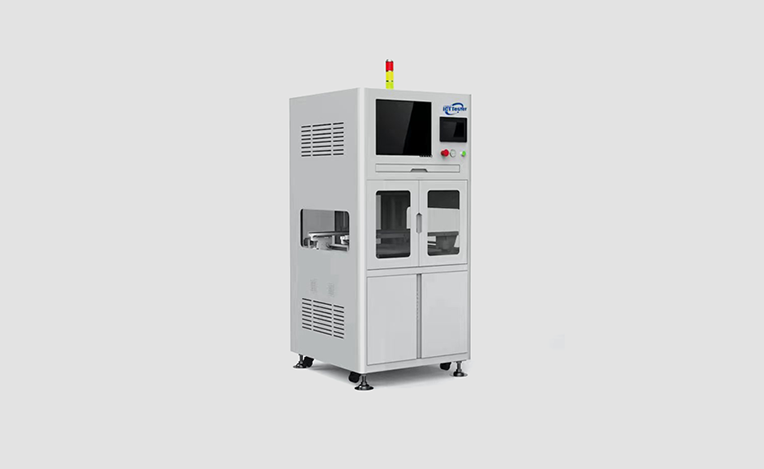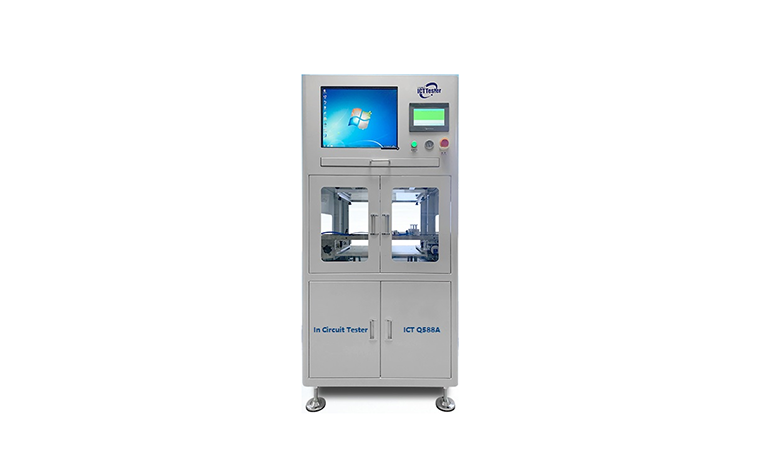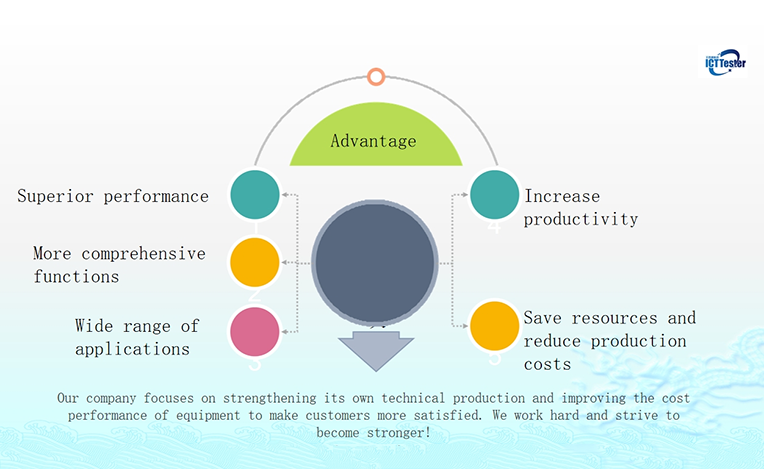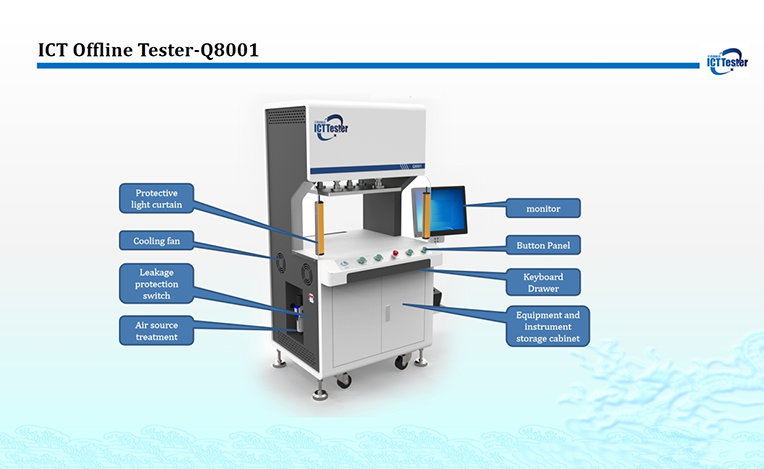



ICT online testing refers to an online test or test method conducted using information and communication technology, which usually includes test content in computer technology, network technology, communication technology, etc. Students or candidates can take the test through online platforms such as the Internet without going to the physical examination room. This test method can be more flexible and convenient for examination and evaluation, and can also obtain test results and feedback in time. ICT testing has become a common test method in modern education and talent training. Let's introduce you to the relevant knowledge of ICT!

ICT provides basic PBC tests for various manufacturing errors and electrical functions. Although many manufacturers include highly skilled personnel and automated equipment, testing can help find critical errors that maintain the function and quality of the equipment. This test method combines custom-designed hardware with specially programmed software to create highly specialized tests that are only applicable to one PCB type.
ICT will test components individually to check whether each component is in the right place and meets the capacity and function of the product and industry. This test method is an excellent way to ensure that everything is where it needs to be, especially as units become smaller.
Although ICT can give you an understanding of the function, this only applies to logical functions. ICT involves testing each component in a device individually to ensure that they all function properly, allowing an in-circuit testing method to let manufacturers and engineers understand how the device works together.
When considering using a specific type of circuit testing such as ICT, you need to understand its specific process and the types of tests it runs:
Component Placement and Implementation: Since engineers will design your ICT hardware specifically for your PCB, the hardware will be connected with specific test points to link with specific components and evaluate their functionality. When they do this, they can also ensure that all components are in the correct space and that your PCB contains all the correct components. After these tests, you will know that all the correct components are in the correct space.
Circuit: As PCBs become smaller, the space for circuits and components is getting smaller, causing engineers and manufacturers to create complex and compact units. Using ICT allows your team to search for opens or shorts on each unit.
Component Condition: When testing whether your device has every component it needs in the right space, you need to ensure that each component is of the highest quality. ICT can screen for damaged or low-functioning components, giving you a way to control the quality of your components and units.
Electrical functions: ICT offers a wide range of electrical functions, including resistance and capacitance. Your test equipment will run specific currents through components to see if they meet the standards you determine.
Understanding how ICT works can help you determine if it is a good choice for your PCB.Due to the wide range of tests ICT offers, you can experience comprehensive quality and functional testing.

ICT verifies each component on the PCB one by one. By providing accessibility to all nodes on the board, ICT can locate about 98% of faults. ICT tests the following:
Shorts
Solder bridges
Wrong or missing components
Component spacing and size
Shorts between traces and/or component leads
Open circuits (opens) where there should be electrical continuity
Resistance values
Jumpers/switches in the correct position
Presence of passive/active components
Capacitance and inductance values
While understanding how ICT testis done can help you determine if you can incorporate its process into your workflow, its advantages and disadvantages can also provide quality information you may need to decide.
ICT is a very precise testing technology that enables engineers and manufacturers to produce the same results every time. However, in addition to quality and reliability, you can also experience more benefits from ICT, including:
Time and cost benefits: Compared with other PCB testing methods, ICT is very fast. It can complete the test of all components in a few minutes or less. When you spend less time testing each PCB, your testing process costs less. ICT provides manufacturers and engineers with a fast, inexpensive way to test while still providing consistent and accurate results.
Large-scale testing: Due to its high efficiency, manufacturers can use ICT to test large numbers of PCBs. ICT provides comprehensive quality testing. Although it only tests a single component, you can still understand how your device works. Manufacturers who produce higher volumes of PCBs can test units quickly without compromising quality.
Customization and updates: Your hardware and software will include specific designs for each PCB, optimizing your testing. When you use ICT, you will know that each test and device you use is designed for that product to provide the most specific testing. In addition, you can update standards and tests through the software.
Of course, it is not a perfect test system. It has some disadvantages:
Test fixtures are expensive to develop.
It will not detect missing multi-power connections, redundant power connections, missing decoupling capacitors, and mechanical fixtures.
Test pins need to make proper surface contact. Otherwise, the results will be inconsistent.
Test pins need to be cleaned and replaced regularly to prevent failures and false alarms.

ICT tester uses electronic probes to test components at various points. ICT checks for shorts, opens, resistance, capacitance, and other parameters. The test will flag any discrepancies. In-circuit testing is usually performed in two parts: power off and power on.
There are several different types of ICT on the market. They vary in performance, capabilities, and procedures. All testers have three main elements:
It tells the system which tests to perform and how to perform them. The software also details the pass and fail criteria.
In-circuit tester. A matrix of drivers and sensors used to set up and perform tests.
It acts as a physical interface between the board and the in-circuit tester. It can use a "bed of nails" fixture.
Shorts and opens: Checks the integrity of electrical connections, including solder joints and traces on a printed circuit board (PCB), to identify problems such as opens, shorts, or faulty connections.
Electronic component testing - resistors, capacitors, inductors, diodes, transistors, integrated circuits (ICs), LEDs, connectors, switches and relays, fuses, oscillators and crystals, transformers.
Voltage levels: Voltage levels are measured at various points in the circuit to ensure they meet specifications.
Digital signals: Digital signals, such as logic levels (high and low), are checked to ensure digital components are functioning properly.
Analog signals: Components such as sensors or amplifiers are tested for accuracy and precision when processing analog signals.
Clock signals: For timing-dependent circuits, clock signals are checked to ensure they have the correct frequency and stability.
Boundary scan testing: Can be used to test the placement of ICs that support the IEEE 1149.1 (JTAG) standard.
Programming and configuration: Device programming during in-circuit testing involves configuring microcontrollers, PLDs, and other programmable devices with the necessary firmware or parameters to ensure they function properly as part of a PCB assembly.
Custom test programs: Can be developed to meet unique testing needs.
Like all test equipment, ICT uses specific tools and equipment to function. Understanding the hardware and software of this test process can help engineers and manufacturers better understand in-circuit test technology and what is unique about this test method.
ICT hardware includes a set of test points that you can use to connect various compartments, which many engineers and manufacturers describe as a bed of nails due to the density of contact points. Because they contact the PCB and its components individually, they are hardware that measures different requirements for each test.
To reach the unique configuration of your PCB components, engineers and manufacturers need to arrange nodes to meet the test points. This means that each PCB type requires a specific node arrangement so that it can contact the components. If you manufacture and test multiple PCBs, you will need to invest in multiple in-circuit testers.
While the hardware will perform the test, the software will help guide the hardware and store important information about your PCB and its components. It will prompt the node to contact its component, start running the test, and collect data about its performance and placement.
Just as your nodes need to be customized before using them on a PCB, you will need someone to program your software to collect information specific to that unit. You can use this to establish pass/fail parameters so that you can determine whether a component meets standards.

The integration of ICT with other inspection methods (such as automatic optical inspection, X-ray inspection, flying probe inspection, functional inspection, system-level inspection), and integration with the production line form a comprehensive quality assurance system. This integrated approach allows for a more thorough and meticulous quality control process, in which different test methods complement each other to cover all aspects of PCB quality and functionality.
Automated optical inspection (AOI) is often deployed before ICT to verify solder paste application, component placement, and correct polarity. This helps to detect potential failures early, thereby reducing the workload of ICT. Manufacturers use X-ray inspection to evaluate the soldering quality of hidden joints or areas under components such as ball grid arrays (BGAs) that ICT cannot reach.
Flying probe testing is often used for design verification, prototyping, or small-batch production runs. While ICT is favored in high-volume production, flying probe testing provides a complementary option for more complex situations.
Functional testing, performed after ICT, replicates the operating environment of the PCB to ensure it performs its intended functions. The process builds on the component placement and solder integrity verification provided by ICT for a more comprehensive evaluation.
System-level testing is the final stage, confirming the overall performance of the entire system after ICT and functional testing. It verifies the integrated functionality of components in the finished assembly.
Shenzhen Qianbaishun Technology Co., Ltd. is a professional ICT tester supplier.
We will show you how to improve product reliability while increasing performance and reducing costs. Our team of technical support experts will provide your company with reliable global supply, unparalleled efficiency and excellent technical support.
Please call +86-130 6688 1349 or send an email to yuan@szqbs.com.cn